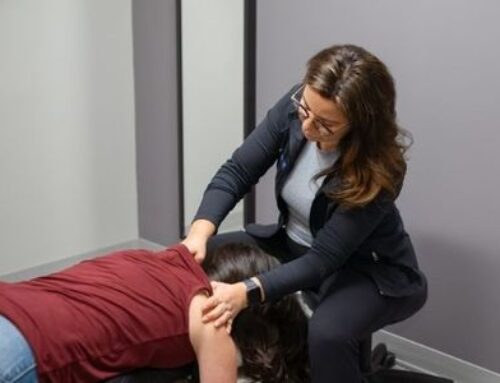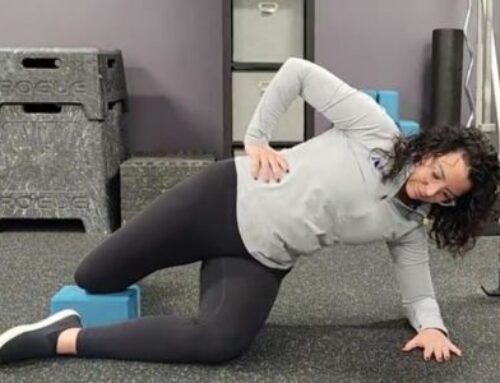Welcome back to the dancer blog, this month we’re continuing our discussion on snapping hip
syndrome by diving into the specifics of diagnosis and treatment. Recall last month that we
discussed the three variants of snapping hip; internal, external and cartilaginous damage. Each
variant of this condition results in popping, clicking or snapping in the hip joint as well as pain. The
location of pain or sound helps us to determine which type of snapping hip syndrome a patient may
be experiencing. For a more in depth breakdown of signs and symptoms of this condition make
sure to check out Part 1.
As discussed in Part 1, we can infer a lot about which variant of snapping hip we are experiencing
based on the location of sound or pain. But this is only so useful. To really figure out which variant a
patient is experiencing, muscle testing is needed. Simply put, muscle testing is a method by which a
provider can specifically test the function of a given muscle to see if stressing that individual
muscle reproduces the patient’s pain.
For example, the iliopsoas’ (technically the convergence of two muscles; psoas and iliacus) main
action is considered to be hip flexion. Therefore, by resisting hip flexion, a provider is muscle
testing for the integrity of the iliopsoas specifically. It’s important to note that most muscle tests
work by testing one muscle more than any other but not necessarily testing ONLY one muscle. Few
muscle tests are that specific and this is due to the complex nature of human anatomy.
All of this is to say that by muscle testing the various muscles involved in the different variants of
snapping hip syndrome, a provider can more specifically determine which variant a patient is
experiencing. At least this is true if a patient is experiencing either internal or external varrients.
But what about cartilaginous damage?
Because the cartilaginous damage variant is the result of soft tissue damage and not a specific
muscle, testing and diagnosis becomes more complex. Cartilaginous damage in the hip can come in
many forms. Damage to the articular cartilage, damage to the acetabular labrum and bony bodies
such as loose bodies or os acetabuli within the joint space can each result in snapping hip
syndrome. In the case of cartilaginous damage there are some orthopedic tests that can be
performed to better determine what is going on however to know for sure where the damage is
often requires imaging. In this regard, MR arthroscopy is most often performed.
When it comes to dance, the big takeaway should be this. The most common hip injury in dance is
snapping hip syndrome. The most common type of snapping hip syndrome that dancers experience
is either of the internal or external variety. BUT it should also be noted that when it comes to
cartilaginous damage in the hip, dancers are unique. In the non-dancer population, the most
common soft tissue injury in the hip is the acetabular labrum tear. See my blog on the topic HERE.
Specifically, non-dancers will experience acetabular labrum tears along the front or anterior
aspect of the hip. Dancers on the other hand most frequently experience this injury along the back
or posterior aspect of the hip. This is why most healthcare providers miss this diagnosis in dancers
as the posterior labrum tear is actually the least common amongst the general population. Once
again this is why it is so important, as a dancer, to have a provider who understands dance.
Ok so diagnosis snapping hip syndrome is a little more complex than simply understanding where
the pain or sounds are coming from. In reality it’s about understanding the possibilities and then
testing for each. But how do we actually treat snapping hip syndrome in dancers? Tune in next
month for the third and final past of this deep dive into the most common hip injury in dance.
In the meantime, this month’s dancer shout out goes to Kayleigh Elizabeth Danowski. Originally
from northeast Ohio, Kayleigh received her training at the University of North Carolina School of
the Arts, the Pittsburgh Ballet Theatre School Graduate Program and additionally from summer
programs at Miami City Ballet, Pacific Northwest Ballet, San Francisco Ballet, and Jacob’s Pillow.
Kayleigh joined Montgomery Ballet and Albany Berkshire Ballet, dancing in Paula Weber’s
Carmina Burana and as the Snow Queen in The Nutcracker. She has also danced with Ballet Quad
Cities, performing as the Sugar Plum Fairy in The Nutcracker. Kayleigh is currently in her sixth season with the New York State Ballet and most recently performed the roles of Arabian and Sugar Plum Fairy in the company’s 2021 production of The Nutcracker. Fun fact, Kayleigh is also in school studying psychology. Her goal is to earn her PhD and work in the field of research where she aims to bring mental health resources to the world of ballet!





